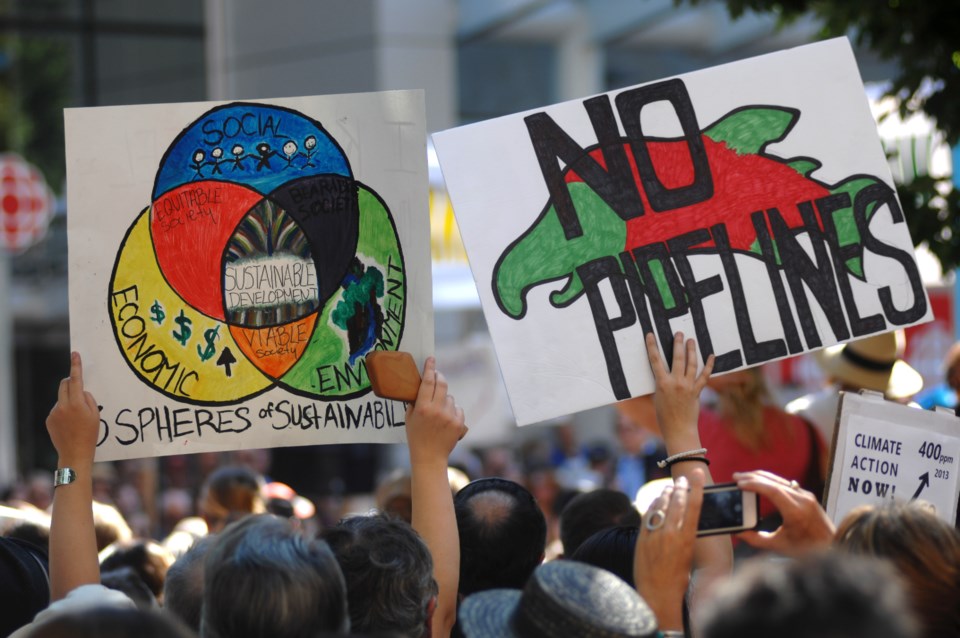Sometimes when a review of a situation concludes that there is huge uncertainty and lack of information to the point that much more study is needed, a government will respond by curtailing the activity in question.
That’s not going to happen when it comes to fracking. Hydraulic fracturing of rock formations to release oil and gas is a fact of life in northeast B.C. and every other gas field in the world. It has become standard practice in almost all new exploration. More than 85 per cent of natural gas in B.C. is produced through fracking. The provincial government’s only major economic initiative — the multibillion-dollar liquefied natural gas plant on the north coast — depends entirely on fracking.
So the report of an independent scientific panel on the practice isn’t going to prompt any dramatic immediate change, at least based on the draft version that was disclosed this week.
The 200-page document is a very technical review that concludes not enough is known about fracking impacts. It raises numerous concerns about water quantities and quality, the handling of wastewater, the dams built to contain water and the seismic implications of continued fracking.
There are also pointed questions about the government’s oversight. The most serious involve some dams built to retain fracking water that were big enough (up to 20 metres high) to qualify for the most stringent approval standard, but were OK’d under much lower standards.
First revealed by Ben Parfitt of the Centre for Policy Alternatives in 2017, that prompted the panel to visit one, where it raised more questions. “There did not appear to be any spillway,” the draft report states.
A spillway or outlet is a basic safety measure that would protect against overfilling in the event of heavy rain. The panel said it’s a critical element because overfilling can lead to “runaway erosion of the dam material, breach and potential catastrophe.”
The dams were built during a change in the oversight regime that saw responsibility shifted from the forest and lands ministry to the oil and gas commission. The draft report quotes one expert who said when the commission got responsibility for water licences, the authority for storage of water (dams) was apparently missed.
The regulatory regime was subsequently tightened. The companies that built large dams retroactively submitted applications to the environmental assessment office and got exempted in July 2018.
When the government eventually releases the report, it will likely heap a lot of blame on the B.C. Liberal government for the deficiencies. But the most complicated part of the response will relate to the Indigenous Peoples in the region — the Treaty 8 First Nations.
The panel consulted them, and the draft report cites extensive misgivings and suspicions about fracking on their part. There is “deep concern” about taking surface water and disposing of it deep underground.
“This single activity has had profound impact on the spiritual connection between Indigenous people and the water.”
But elders were reluctant to share their traditional knowledge about the region with the panel “because of a mistrust of government and a belief that doing so will be used against them.”
The panel got only a few details about frogs being out of place and wetlands changing so that plants important to native culture no longer grow.
The approval process includes a First Nations review and gives them some power to stipulate conditions. But they don’t always get incorporated into the approvals. One First Nation got requests in the space of two days to review two applications to use seven million cubic metres of water, a measure of how overwhelming it is. Treaty 8 nations have had more than 12,800 wells referred to them for comment in the past 16 years.
They expressed worries about the long-term integrity of wells, saying 50-year-old sites are still being cleaned up and animals are dying due to inadequate protection around abandoned wells.
So a government that is firmly committed to a $40-billion LNG deal that depends entirely on fracking is also committed to bringing Indigenous people much deeper into resource decisions, when they are very suspicious of one essential process.
It’s going to take a lot of studies to reconcile those goals.
- Les Lyne, Times Colonist


